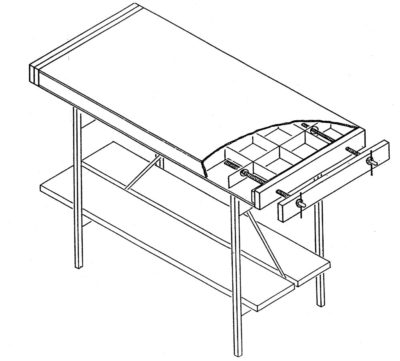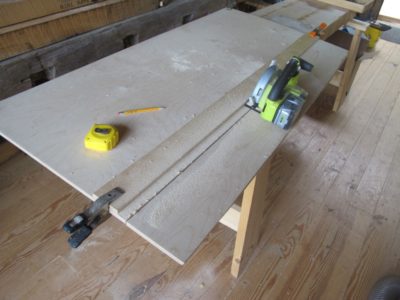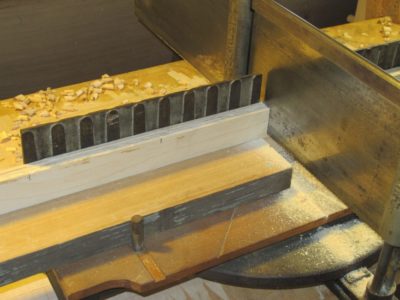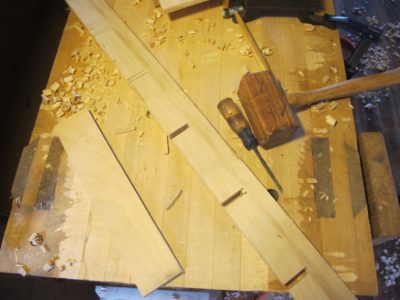Workbench Wednesday – Ultimate Portable Workbench 2

One of the major evolutions of this final version versus the first one was the overall length of the unit, from 48″ to 60″. There was no a priori reason for this change from a functionality perspective, there is precious little conservation work you can do on a 5-foot long bench that you cannot do with a 4-foot long bench. The proof of this is my beloved 4-foot torsion-box-with-Emmert bench that has served my everyday needs for more than thirty years, with a little help from a movable deadman.

In the earliest versions the only way I could fit in 30″ legs was to install them offset. For reasons I can never really articulate, I found this feature offensive.
When it comes down to it, the real reason for the extended length is that it allowed me to have folding legs that did not have to overlap when the bench was folded up. Splitting the length distance in half, I can have folding legs of 30″, which when added to the 3-inch bench thickness proved me with a 33″ working height; lower than I prefer but adequate for on-site work even for an extended period. Given that the bench was designed for on-site conservation tasks, much of which would be executed while sitting, this was more than acceptable.


As an incidental benefit, the length also allowed me to make full advantage of a 60″ x 60″ piece of Baltic Birch plywood. I began by cutting the whole piece of 6mm Baltic Birch into two 24″ x 60″ face skins and one piece of 12″ x 60″ to use towards the internal torsion-box grid.

With a perimeter of 12mm Baltic Birch I set to cutting and gluing the pieces in place.

I ripped the 6mm plywood into the necessary ribs on the table saw, then ganged them together to edge plane the whole lot of them to enhance the overall flatness.


I cut all the ribs to length and notched them for the egg-crate construction.

This is us test-fitting the internal grid on the previous version. Somehow I did not take pictures of this step on the current model.


Join the Conversation!